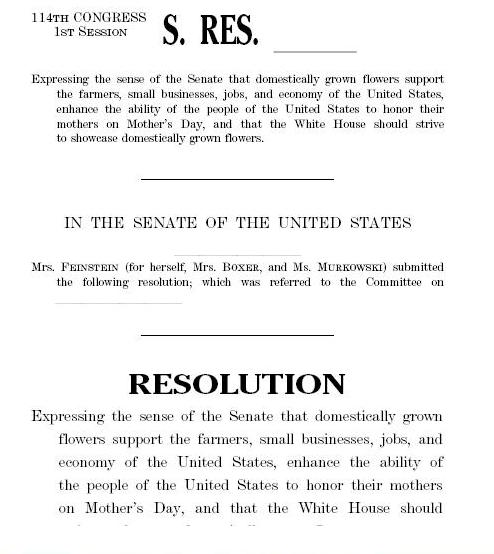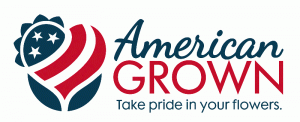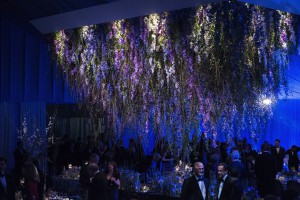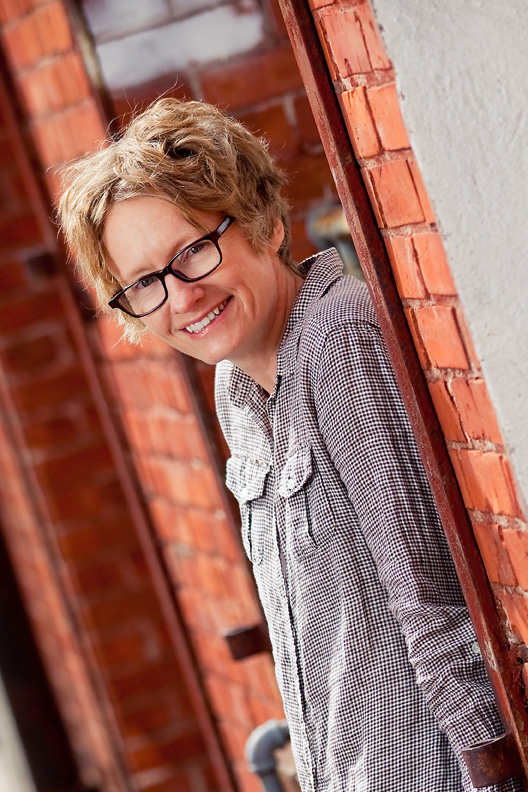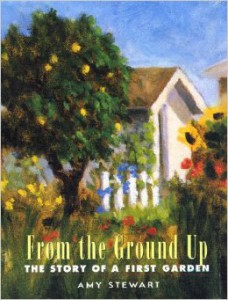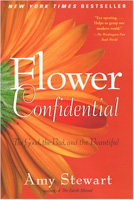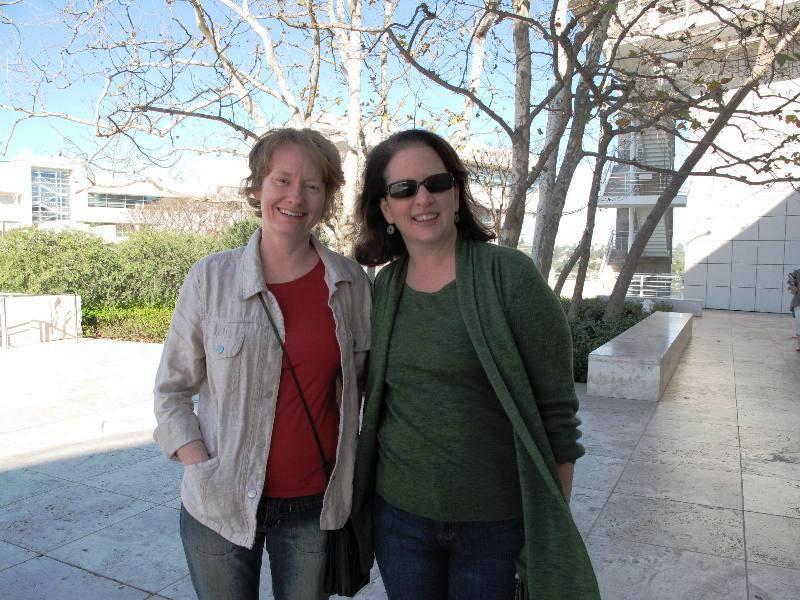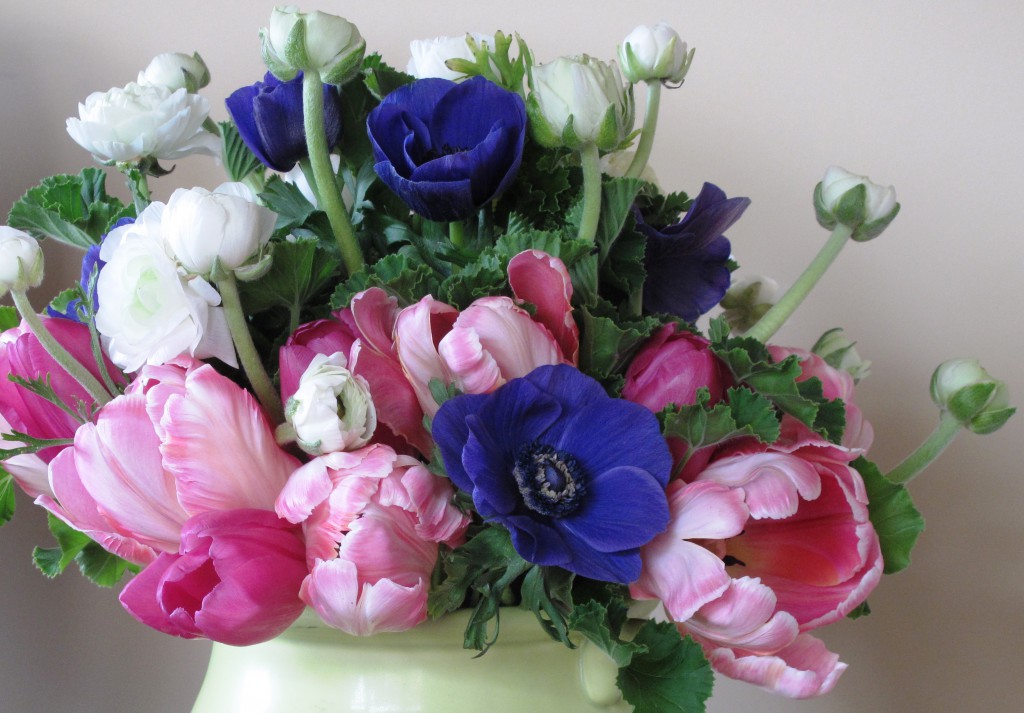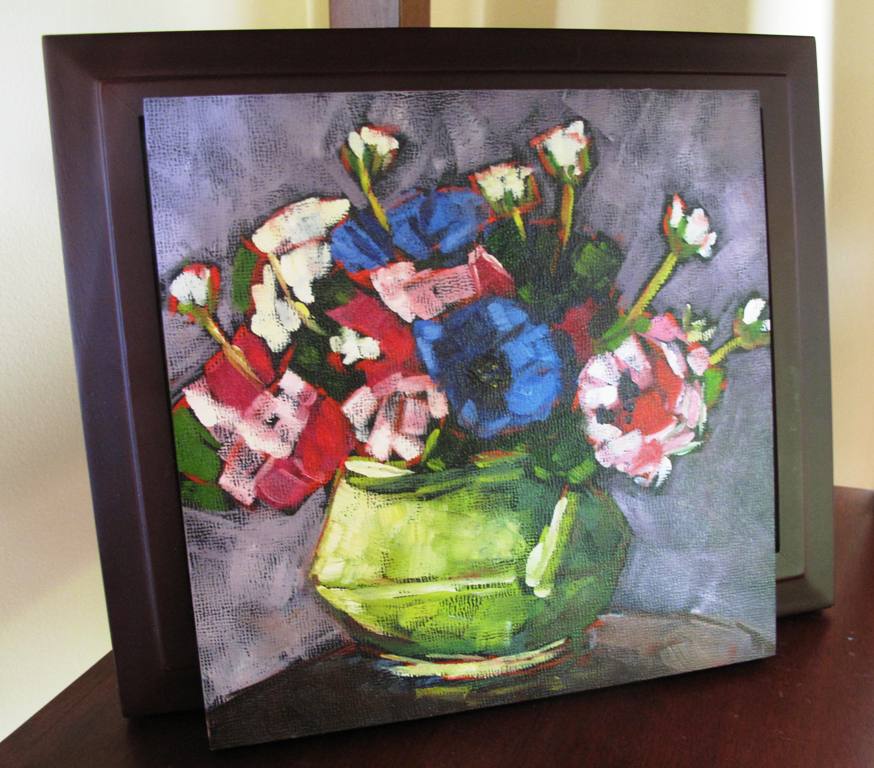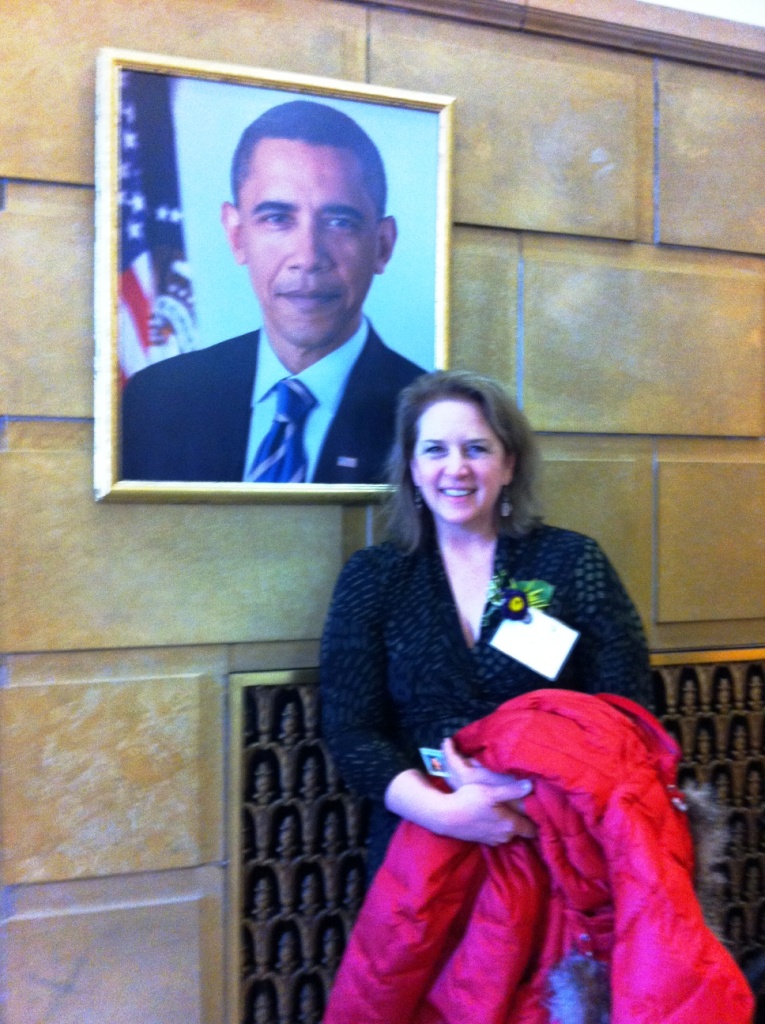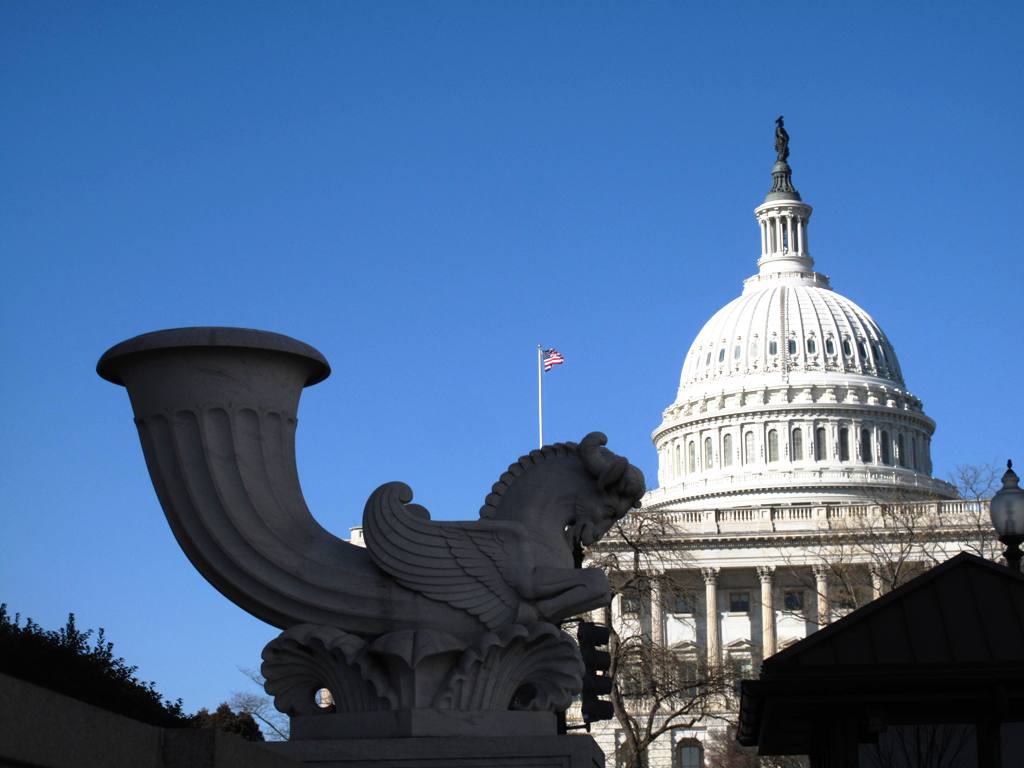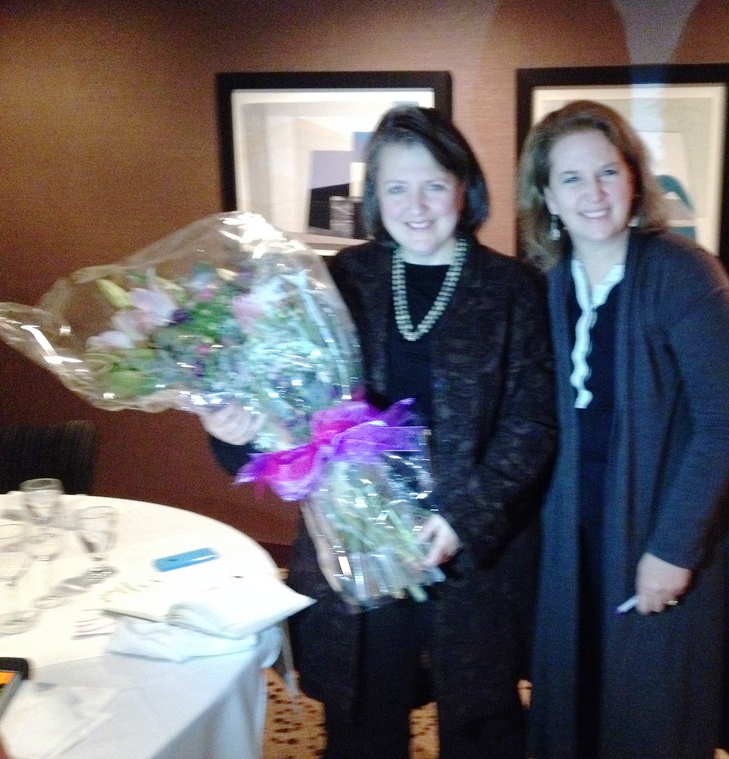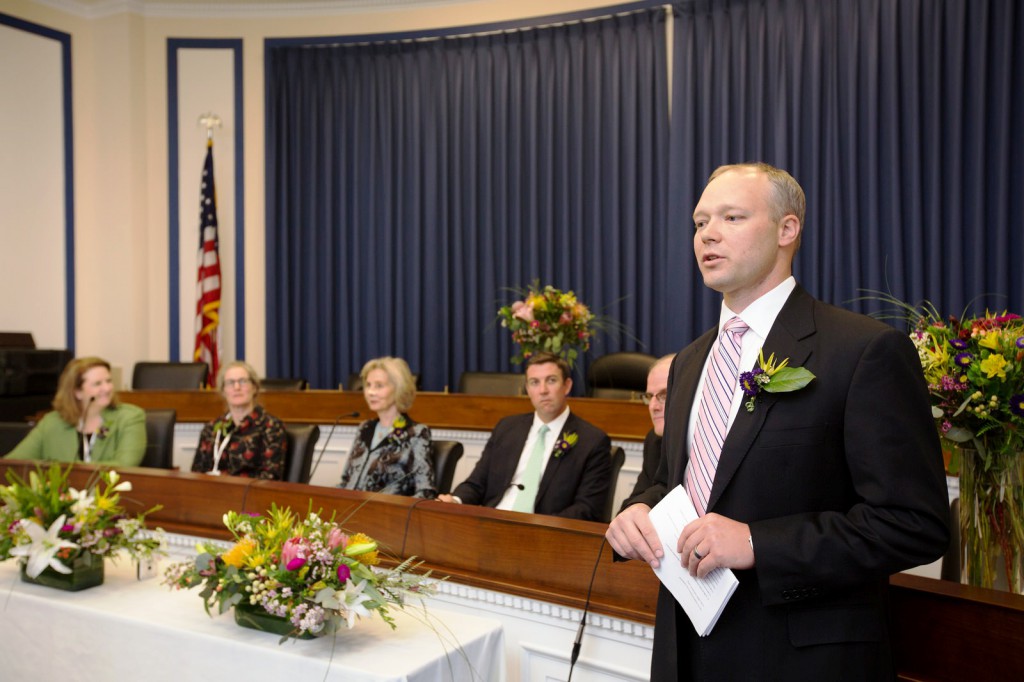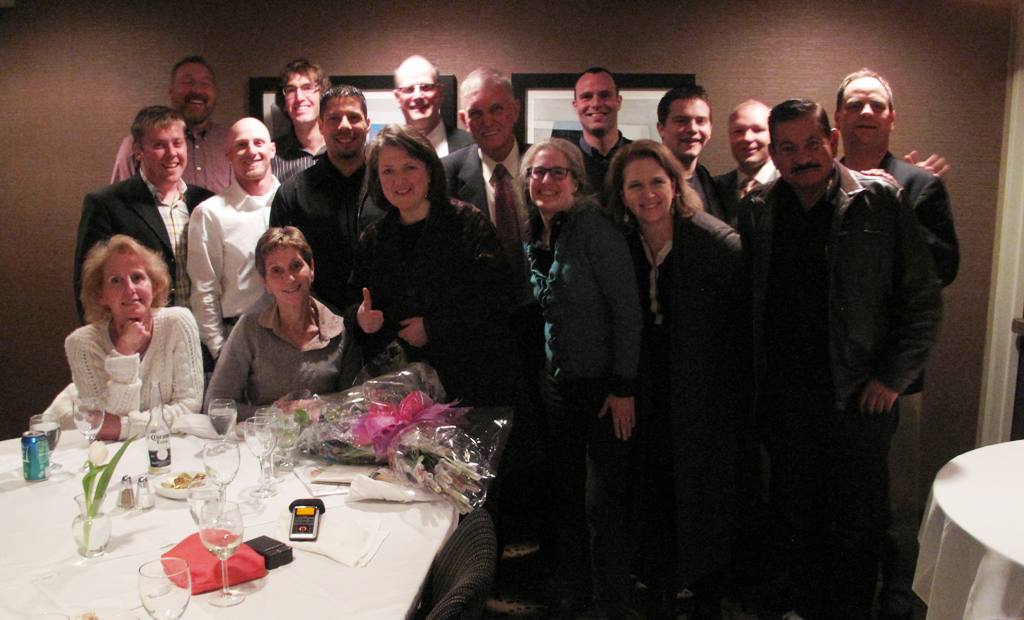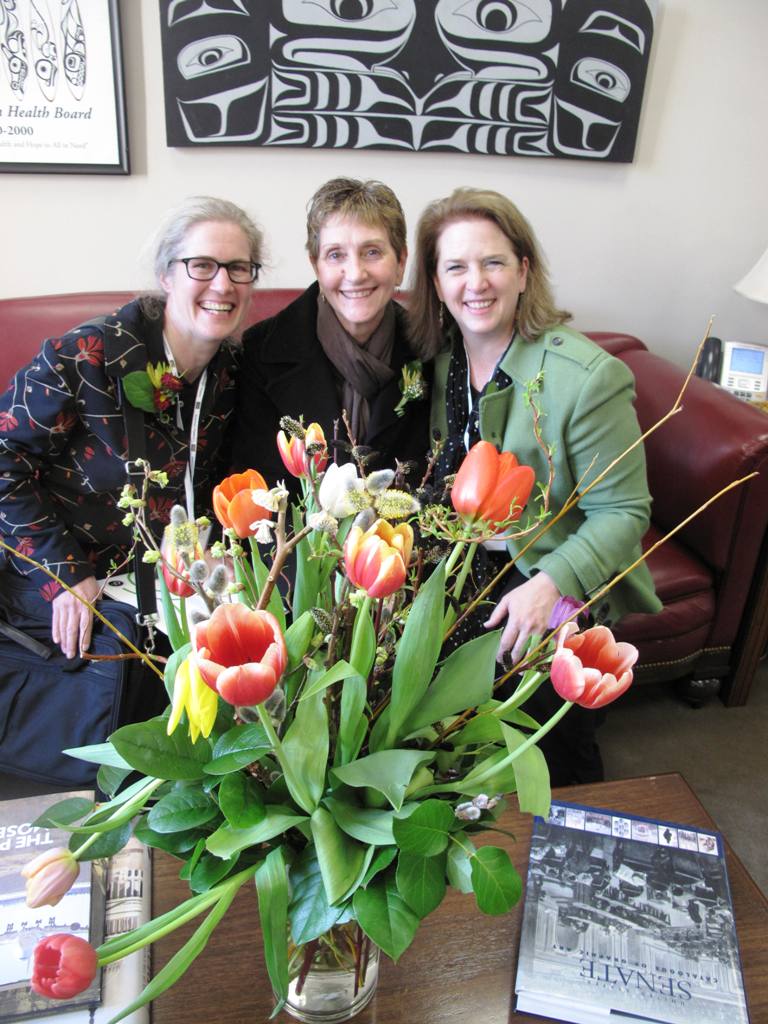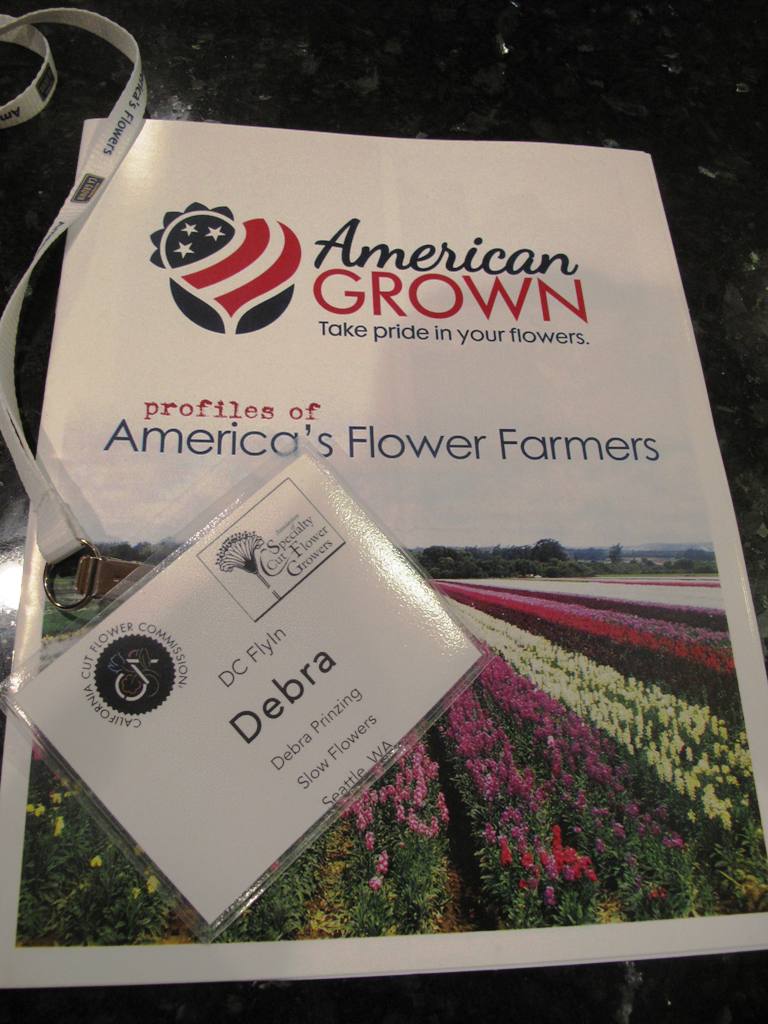Podcast: Play in new window | Download
Subscribe: Apple Podcasts | Podcast Index | | More
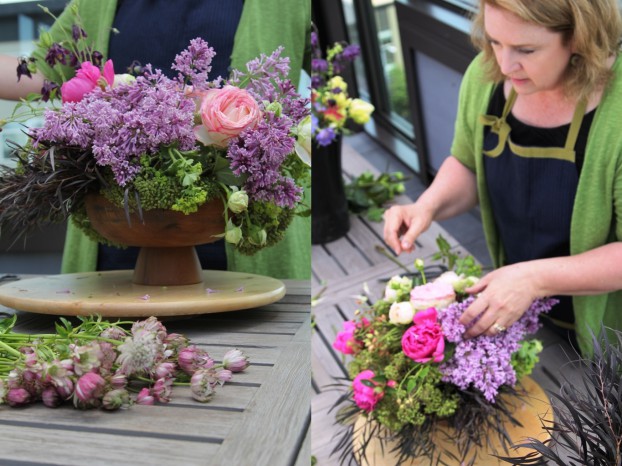
What a joy it has been to live a bloom-filled year of flowers. These images are from a photo shoot for a Seattle design blog this past May.
Welcome to the final Slow Flowers Podcast of 2014.
Every single week this year; in fact, every single week for the past 18 months, I’ve had the immense privilege of hosting a dynamic and inspiring dialogue with a leading voice in the American floral industry.
The segment I recorded one year ago, for the January 1st episode, asked: Will 2014 be the year we save our flowers?
In reflecting on that and other questions I posed, I have to say that over the past 12 months we’ve witnessed some amazing and encouraging strides in the Slow Flowers Movement.
Here are a few highlights:
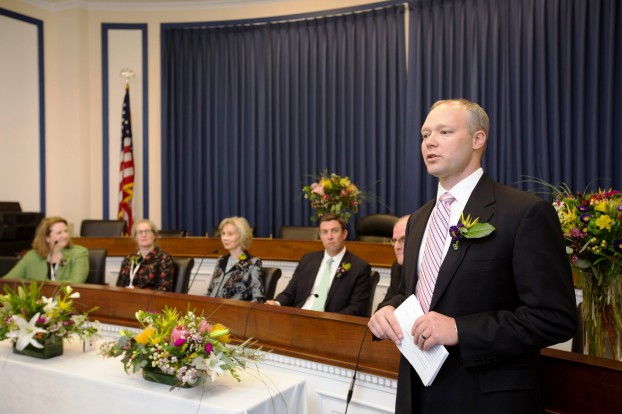
I was one of five persons who participated in the press conference on Capitol Hill to announce the formation of the Congressional Cut Flower Caucus. From left: Debra Prinzing, Diane Szukovathy, Rep. Lois Capps, Rep. Duncan Hunter; Lane DeVries is partially seen behind CCFC’s Kasey Cronquist (standing).
-
The formation of the Congressional Cut Flower Caucus.
Co-chaired by a bipartisan leadership team of Representatives Lois Capps and Duncan Hunter, this new endeavor is both strategic and symbolic as it engages policymakers in a tangible program to promote cut flower farming in their own districts and states. I was privileged to speak alongside Capps and Hunter, as well as with two American flower farmers Lane DeVries and Diane Szukovathy, at the February 2014 press conference announcing the Congressional Cut Flower Caucus on Capitol Hill. That remarkable experience is a milestone for all of us, one we’ll reflect on as this movement gains further momentum in the hearts of American consumers around the country – as they make conscious choices at the cash register, at the farmers’ market, at the florist and from online e-commerce sellers who identify domestic and local flower sources.
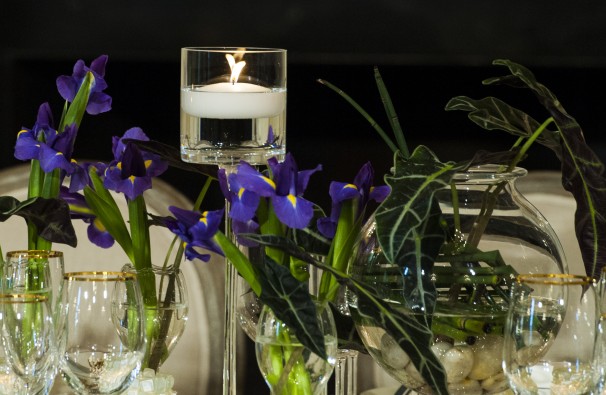
(c) Washington Post image of California irises and Florida tropical foliage.
-
Also in February, the White House used American flowers and foliage to decorate a State Dinner hosting French president Francois Hollande.
Beautiful domestic flowers from across the country – grown in California, Florida and other states, adorned the event and even prompted a feature article in the New York Times. As I wrote at the time: I predict this is beginning of a White House commitment to give as much attention to the origins of its flowers as it does the origins of the food and wine it serves to guests. There’s much more ground to gain when it comes to White House flower procurement. Yet, I believe that State Dinner was just the beginning of many more occurrences where American flowers at the White House represents so much more than simple decoration choices. It will represent American jobs, the American farm, the Environment, Economic Development and a Sustainable Floral Industry here at Home.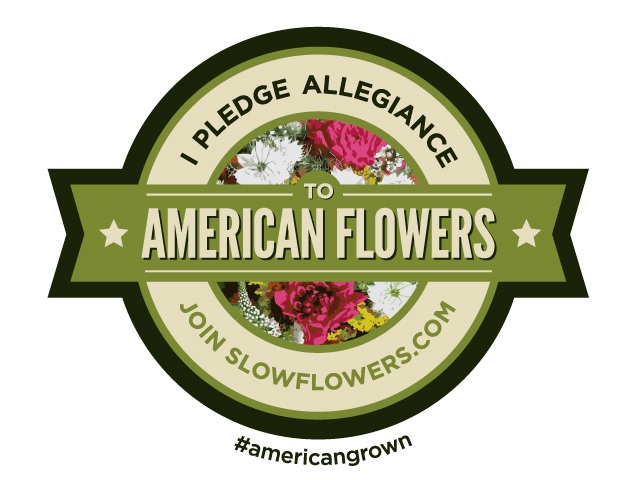
-
In May, after nearly a year of planning and development, I launched Slowflowers.com.
Slowflowers.com is the directory I’d been dreaming of creating for several years. We launched with fewer than 250 listings and now, by year-end, there are 435 businesses — flower farms, floral shops, studios and designers who grow and create American grown floral beauty, coast to coast.
We’ve had more than 52,000 page views and more than 11.5 thousand unique visits to the site. In 2015, with your help, I hope to expand this online directory to include one thousand members – companies that grow, design with and sell American flowers. I can’t take any credit for the success of Slowflowers.com without thanking the 229 contributors who helped me raise $18,450 on the crowd-funding site Indiegogo. All of those funds have been used to build, develop and promote this site. I’m humbled and awed at the groundswell of support from individuals and small businesses alike. Slowflowers.com has so much potential as THE single resource to connect consumers with American grown flowers. And I look forward to making Slowflowers.com even better in the coming year.
-
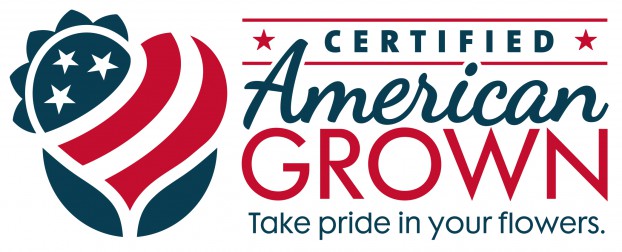 Certified American Grown Flowers
Certified American Grown Flowers
Motivated to promote domestic flowers and foliage in a new and strategic way, the American Grown Flowers & Foliage Task Force developed and launched a single domestic floral brand in 2014.
The ad-hoc group included flower farms large and small, established and emerging. A cross-section of support came from many groups, including the Seattle Wholesale Growers Market, where my own energies are directed.
The seed funds created an initial promotion budget, a brand name, “Certified American Grown Flowers,” a tagline, “take pride in your flowers,” and a contemporary logo that evokes Americana and agriculture, as well as fashion and style.
Third-party certification ensures origin – that Flowers and foliage are grown in the U.S. by American farmers; as well as assembly — that all ingredients in mixed bouquets are 100% grown and assembled in the U.S. Thirty-three farms are already certified and in the coming year, this brand’s visibility will expand and increase as more flower farms seek certification to signify the domestic origin of their flowers.
In 2015, we’ll see this branding appear on the sleeves of mixed bouquets and consumer bunches, as well as on point-of-purchase signage at supermarkets around the U.S. The brand answers the inevitable questions: Where were these flowers grown? And it gives supermarket shoppers transparent and truthful labeling about their purchases.
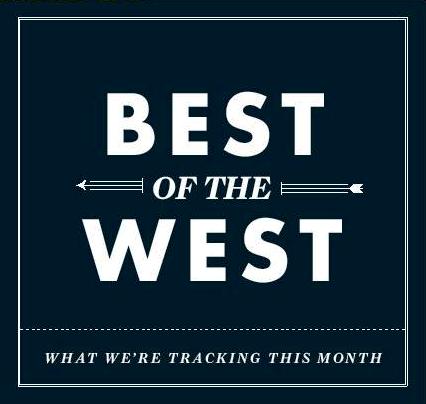
-
Best in the West
Slowflowers.com has received great attention in the media, thanks to the compelling story of American grown flowers. Dozens of articles, interviews and broadcasts have shared the web site as a free consumer resource – and one special highlight for me was being named a “Best in the West” resource by Sunset magazine for “best way to buy flowers.”
Debra Prinzing’s 2015 Floral Insights and Industry Forecast
10 must-watch ideas that are taking hold in the American floral world.
As we track the momentum and direction of American Grown Flowers, I know some of you have already experienced these developments. In fact, my conversations with guests of this podcast have influenced this list.
I look forward to your reaction and thoughts, as well as input on items I’ve overlooked or missed! I invite you to share yours in the comment below:
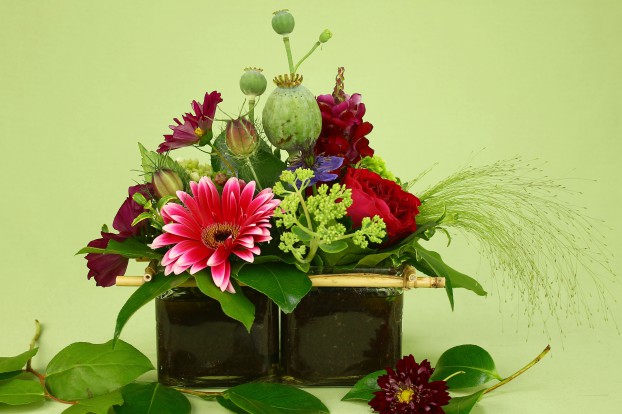
Earth- and florist-friendly, the advent of Floral Soil is revolutionizing the conventional floral industry.
- Eco/Non-toxic floral design
For several years, eco-conscious designers have openly rejected floral foam while adopting other techniques and mechanics for arranging flower stems (chicken wire, vintage frogs, twig matrixes, and tape grids are some of those methods).
Nothing had emerged to fulfill the role of formaldehyde-based flower foam. That’s until now. Mickey Blake, a “green chemistry” entrepreneur, has developed a plant-based, 100% compostable alternative to toxic foam called Floral Soil. She has applied for numerous patents for the product and is scaling up for production and national distribution in first quarter 2015.
Floral Soil replaces a chemical-based product that has been on the market since 1954. With so many concerns about our personal health, and the health of our planet, Floral Soil has created a huge buzz among florists and floral retailers. If you want to learn more, follow this link to my September episode featuring a conversation with Mickey Blake, the first media interview she granted.
Giving the floral industry more green choices will continue to move from the fringes to the mainstream. There are other notable introductions you may wish to check out, including Eco-Fresh Bouquet, a new hydration sponge wrap designed by former florist Debbie DeMarse. The product is geared to the retail-online-grocery marketplace and utilizes a plant-based composition as a way to keep stems fresh during transport or shipping.
Wrapped around the cut stems of a bunch or bouquet of flowers and moistened in water, the product hydrates stems for up to 12 days. I’ll be trialing this product in the coming weeks. Visit Eco-Fresh’s website, where there are reviews from florists who have used the product and information on request a product sample to trial yourself.
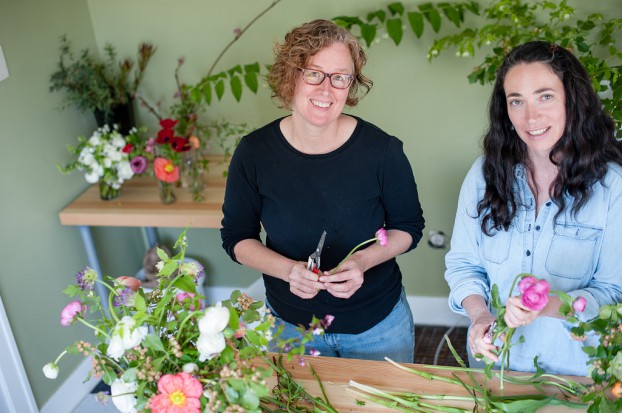
Elizabeth Bryant and Kailla Platt
- Couture/Custom Growing
Small-scale flower farmers are offering their floral clients (florists and wedding parties) the opportunity to pre-order seasonal crops that will be harvested and used for their wedding. The service is called “Custom Growing.”
This couture, artisanal approach to floral design involves and engages couples who want to specify the exact flower, fragrance and color palette for their nuptials. It also elevates the flower to a starring role in the ceremony, one that’s as significant as other design choices (clothing, venue or menu). I was introduced to this idea by Elizabeth Bryant of Rose Hill Flower Farm and Kailla Platt, owner of Kailla Platt Flowers, both of Portland, as we discussed their custom grow-design wedding program in a Podcast interview this past August. If you missed it earlier, here’s a link to that interview here.

American Grown Floral Visionary, Ellen Frost.
- Micro-lending/Flower Futures
Demand for specific flower varieties often outpaces supply, especially when it comes to highly-desired colors and cultivars. Forward-looking floral designers are investing in “floral futures” that is, crops they know their clients want, by pre-buying bulbs, seeds and seedling stock from the source: the farms who supply them. Farmers may not have the financial resources or ability to take the risk to invest in planting acres of flowers ‘on spec’, but they are often eager to expand capacity.
Enter the florist who wants to pre-order (and offer important guarantees), which offers an unique partnership that is paying off for everyone. Ellen Frost of Local Color Flowers in Baltimore is a leader in micro-lending, and I anticipate that other florists will join her efforts to ensure a more beautiful, local, fresh and abundant supply of the flowers they desire. If you missed the conversation, here’s a link to my October interview with Ellen.
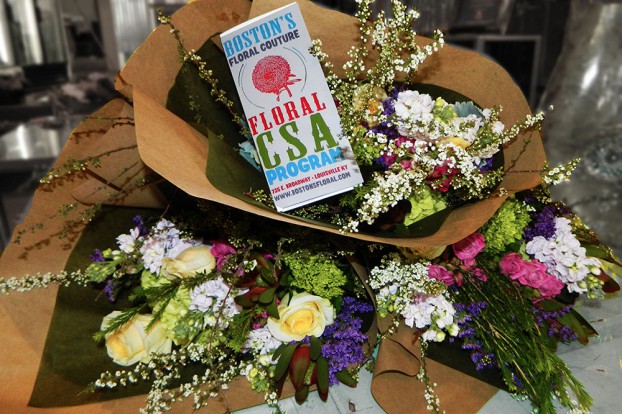
Floral CSAs at Boston’s Floral Couture in Louisville.
- Floral CSAs
I know that CSAs in the food world are well established, but when it comes to floral CSAs, I have been overwhelmed by the volume of Slow Flowers members who are now offering such programs — and I expect this marketing method to grow in 2015.
Just like Community Supported Agriculture or CSAs for food, Floral CSAs are based on seasonal and locally-harvested farm-fresh flowers. When you become a member of a flower CSA, you are buying a “share” of the flowers that a local farm produces each season. By paying for that share before the growing season gets underway, we support small flower farms as they plan, invest and plant. With your help, they are able to purchase new seed varieties, restock supplies, and make repairs to equipment and infrastructure. Community and customers are connected to their local flower farms — and reap the bounty of that botanical harvest, by the week, month or season. Instead of flavorful food, these CSAs deliver fragrant, intricate and beautiful flowers – a reflection of place and time on a local farm. The programs ensure a regular stream of local flowers for the home and give customers the satisfaction of supporting local agriculture and family farms.
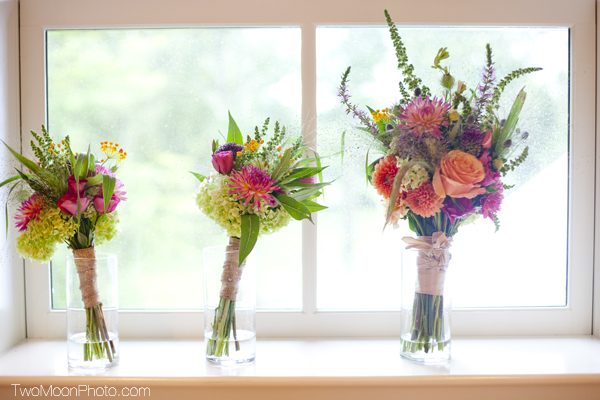
Wildflower-inspired bridesmaid bouquets, grown and designed by Robin Hollow Farm.
- Cultivated Wildflowers
Wildflowers are a carefree, ephemeral expression of America’s connection to the land – from meadow and stream bank to forest and trail. But thanks to increased understanding of saving wild places and preserving public lands, there’s a newfound awareness that picking wildflowers is not smart (and in many places it’s illegal).
There are many sources for collected wildflower seeds; this allows flower farmers to safely and legally grow enduring favorites like black-eyed Susan and lupines. The look is quintessentially American. The just-gathered style carries over to floral crowns, garlands, bouquets and centerpieces.
This past fall, Slowflowers.com collaborated with Brooke Showell, a writer for Four Seasons Magazine, in a story called “Wedding Wildflowers,” highlighting the choice of Naturalistic flowers that appear freshly picked from a garden, meadow or farm.
The good news is that most domestic field-grown flowers fit this free-spirited, uncontrived aesthetic – and I know we’ll continue to see talented designers express the look in their arrangements.
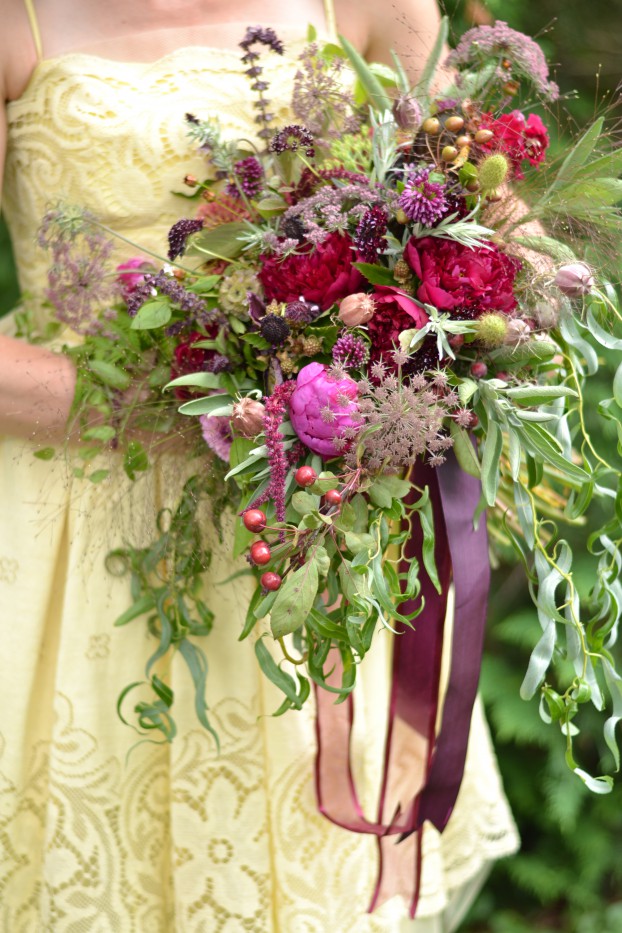
A brighter floral palette is super romantic and feminine. Design: Buckeye Blooms
- Bright pastels, Saturated Jewel Tones
For the past few years, pale palettes have populated wedding bouquets and driven demand for subtly-colored flowers like blush-toned ‘Café au Lait’ dahlias. Next seasons, color palettes promise to be richer and more vivid, reflecting a deeper saturation of petal color. Watermelon pink, orchid purple, cerise red – these sun-drenched hues are wooing brides who want a more vibrant flowers to hold and wear. There’s a gradual departure from an all-neutral bridal bouquet. Blush hasn’t left completely, but she’s sharing the stage with brighter hues.
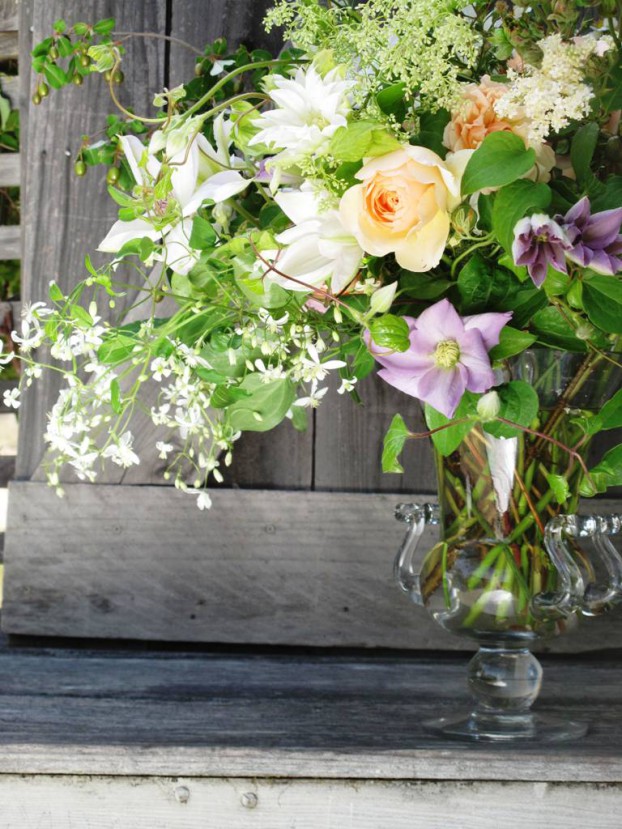
Beautiful, wistful clematis. Flowers and design by Kaye Heafey, Chalk Hill Clematis
- Vines, vines, vines
Demand for trailing tendrils outpaces the available stock that farmers are able to produce, signaling a market opportunity for innovative growers and designers. All types of vines are considered “premium” floral ingredients, producing a far better-than-average return on investment for farms that grow vines and florists who integrate vines into their designs.
The unstructured silhouette and whimsical shoots and tendrils portrayed by vines lend distinctive character to floral arrangements, headpieces and bouquets. Florists who have trouble sourcing clematis, jasmine, passion vine and other varieties are turning to horticulture (or friends’ gardens) to find the vines they want.
I recently asked Slow Flowers members to weigh in on some of these stylistic shifts in bridal preferences. With so much influence from wedding blogs and magazines, from instagram and pinterest, it’s no wonder that brides are curate their own look and feel from many sources.
Susan Studer King of Buckeye Blooms in Elida, Ohio, shared her perspective, which actually addresses the three points I just made, this way:
“We are consistently finding that brides covet the lush, loose look of natural garden flowers with interesting textural elements and slightly cascading finishing accents such as tendrils of clematis or sweet pea vine. We are also seeing a steady shift in interest away from blush tones and more toward more vivid, vibrant shades and jewel tones.”
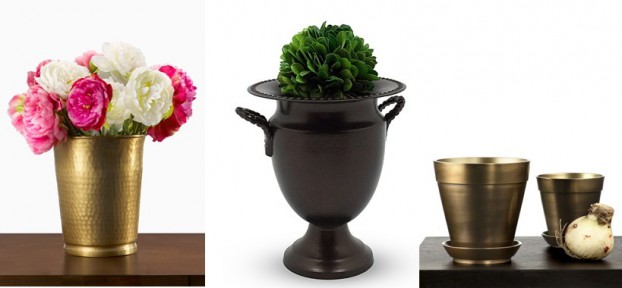
Suppliers like Jamali Garden are introducing a wide array of hammered metal, brass, bronze and copper vessels.
- Good-bye, Mason Jar
Like many, I’m pleased with Ball’s recent reissue of its aqua blue and bottle green canning jars for the contemporary marketplace, but this American classic glass jar seems to have hit its saturation point.
Designers are seeking out the next easy and affordable vase for wedding reception centerpieces on a dime.
The solution, it seems, is at the thrift store, where inexpensive brass vessels are readily available. Mellower than tarnished silver, brass is versatile and suits both old-world and contemporary designs. A close relative to brass is old copper, which develops its own alluring patina with time.
Now, floral suppliers have releasing full lines of tarnished and hammered metal vessels, so it’s possible to avoid that trip to the thrift shop, yet those new introductions are all imported.
So the big search is on for American-made glass vases in contemporary rather than dated shapes. I know of a number of designers pushing for an American made option – and we’ve yet to find stylish choices. Will that come in 2015?
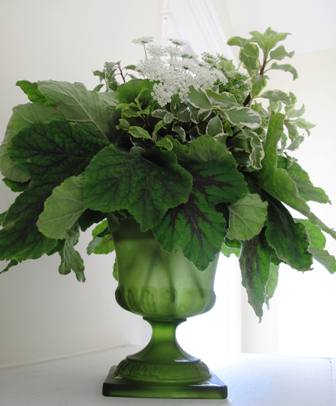
Love the shades, shapes and textures of green foliage in one of my favorite containers.
- Superstar Foliage
You might call this style “50 Shades of Green” and thanks to flower farmers who are planting interesting new foliage, we’ve all decided that a bouquet with generic greenery is yawner. An uncommon palette of distinctive foliage ups the character of a floral arrangement, bouquet or centerpiece. The options are exploding, moving far beyond salal, ferns and bear’s grass. Look for options like raspberry foliage, baptisia, scented geranium and other herbs, smoke bush, ninebark, pittosporum, box, myrtle, magnolia, camellia, and other uncommon types of greenery to upgrade the ordinary bouquet. Hand in hand with awesome foliage is where we source it – from the landscape, orchard or forest is so much more beautiful than the prosaic selection the industry has typically offered florists. It takes ingenuity, perhaps, to develop sources of unconventional leaves, but increasingly, that ingenuity means success for the designer who wants to differentiate him or herself from the everyday marketplace.
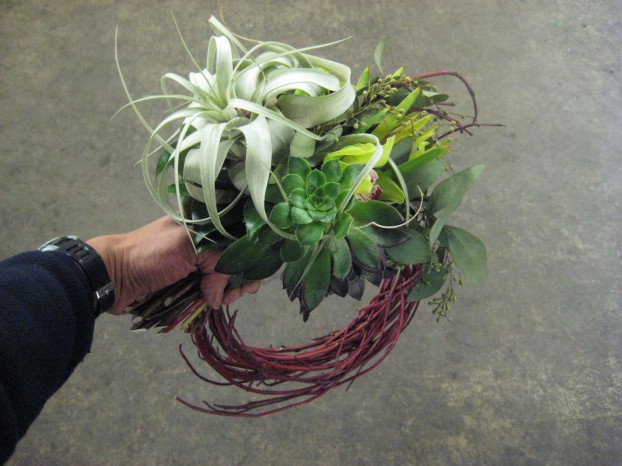
Man bouquet, designed by Riz Reyes of RHR Horticulture.
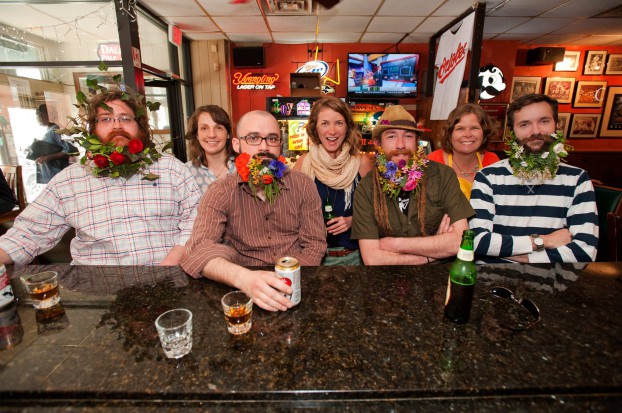
Guys in Baltimore, modeling their floral facial hair for Local Color Flowers’ Baltimore Beards Project
10. Man-bouquets and floral beards
Real Men Love Flowers. Other than donning a boutonniere on their suit lapel, the masculine floral consumer has been ignored for too long. Cutting-edge guys want flowers, too – and innovative designers are responding. Riz Reyes, a Seattle-based horticulturist and floral designer, has created the “man bouquet,” a cluster of woodland blooms attached to a hand-carried grapevine wreath. Certainly, it’s for the more adventuresome groom, but as Riz asks, “why not?”
Irene Donnelly, a staff designer at Local Color Flowers in Baltimore has taken the idea of “personal wedding flowers” to a new level by weaving, pinning or gluing the green stems of tiny botanicals into the facial hair of hipster male customers. Designed floral beards are made from sedums, succulents, poppies, ranunculus, tiny pods. A few guys have even worn floral eyebrows and mustaches.
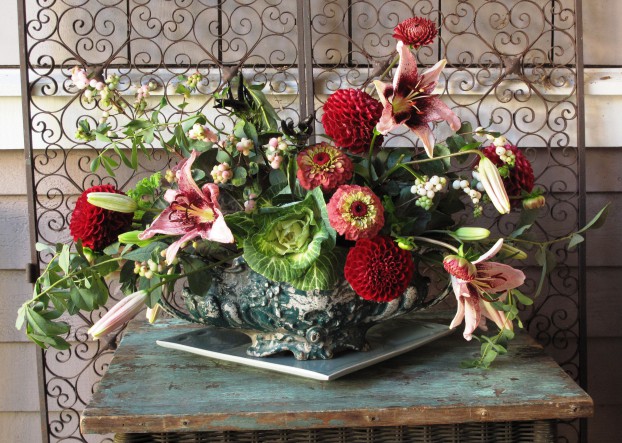
So Happy to Share My Year in Flowers With YOU!
So that’s my take on the pulse of America’s floral industry.
I hate to use the term “trend,” when what we’re really talking about is a cultural shift.
The question for you is this: are you part of the shift? Are you helping to propel the Slow Flowers Movement forward through your own actions, through the way you communicate to your customers and the marketplace?
The goal of the Slow Flowers Podcast is to put more American flowers on every table, one vase at a time. Listeners like you have downloaded the Slow Flowers Podcast more than 28,000 times. If you like what you hear, please consider logging onto Itunes and posting a listener review.
I wish each and every one of you a happy new year, one that’s filled with prosperity and peace as we join together to change the broken U.S. floral industry. I believe that we’ve already changed things for the better – and that momentum will continue in 2015.
The Slow Flowers Podcast is engineered and edited by Andrew Wheatley and Hannah Holtgeerts. Learn more about their work at hhcreates.net.
Music credits:
Tryad – Our Lives Change
Tryad – Lovely
Tryad – Star Guide
Marcus Eads – Johnson Slough
Marcus Eads – Praire’s Edge









